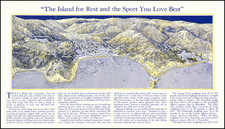Early lithographic image of the Newmark Block, in Downtown Los Angeles, circa 1880.
The Newmark Block was owned by pioneer Jewish settler Harris Newmark.
Businesses shown on the blaock include Wells Fargo & Co. Express, Desmond Hat Store, L. Jacoby, Los Angeles Co. Bank, and an early street car in the foreground.
The Newmark “Block” is the square building in the middle, not the entire city block. Note that S. Hellman’s stationary store, where Isaias Hellman worked, is on the ground floor of the Newmark Building. Desmond’s Store, which became the Desmond’s Department Stores, is left of the Newmark Building, and Jacoby Bros., another major retailer, is in the larger building on the right.
Hellman's Stationers and Book Store (lower floor), dates back to the mid-1850s. Hellman's owned by Isaias W. Hellman, a pioneer Los Angeles Banker and one fo the founders of USC.
Harris Newmark
Harris Newmark was born in Loebau, West Prussia, in 1834. From his early years, Harris was exposed to commerce, accompanying his father, Philip Newmark, on trips selling specialty printer’s ink.
Harris came to Los Angeles in 1853, at the age of 19. Traveing from New York, across Nicaragua, and eventually reaching San Francisco, and from there, sailing southward to the City of Angels, where he began an early associaton with then Harbor Master, Phinias Banning, at the Port of San Pedro.
Harris was following in the footsteps of his brother, Joseph P. Newmark, who came Los Angeles in 1851 and established a wholesale clothing store. Harris worked with Joseph for a year before Joseph relocated to San Francisco, to pursue commercial real estate. Harris ran the clothing business until 1861, before moving into the wholesale business in hides and wool.
Harris was present at the dawn of organized charity in Los Angeles. He witnessed the formation of the Hebrew Benevolent Society and later played an advisory role when the Ladies Hebrew Benevolent Society began in 1870. He took on the role of presdient of the Congregation B’nai B’rith in 1887. Harris's philanthropy also extended to the Jewish Orphans Society, a precursor to what we know today as Vista del Mar.
Harris’s contributions to Los Angeles's civic life were diverse. He played a pivotal role in the inception of the original Los Angeles Public Library and was a Charter Member of the Los Angeles Chamber of Commerce. Furthermore, Harris helped establish the Los Angeles Board of Trade, catalyzing the railroad's arrival in Southern California. He was intricately involved in the development of the Southwest Museum, which was an endeavor of his dear friend, Charles Loomis. This museum's collection was eventuallymerged with the Autry National Center.
In the realm of real estate and land development, Harris's ventures were just as expansive. Together with his cousin, Kaspare Cohn, he saw lucrative opportunities: the purchase of Santa Anita Ranch (later selling it to "Lucky" Baldwin) and significant land acquisitions on what is now Wilshire Boulevard and in Santa Monica. In 1886, they planned a town initially named “Newmark," which would become Montebello.
In 1877, Harris acquired the Temple Block, a grandiose three-story edifice located at Temple and Main Streets. The building eventually became the new City Hall after he sold it to the city. Harris was instrumental in urging the Southern Pacific Railroad to lay tracks to the city.
Isaias Wolf Hellman (1842-1920): Pioneering Banker and USC Co-Founder
Born in Reckendorf, Bavaria, Isaias Wolf Hellman arrived in Los Angeles in 1859. Initially, he worked in his cousins' store, which specialized in selling stationery and cigars. Embracing the trade, Hellman quickly became integral to the business, helping grow its reputation at the intersection of Main and Temple streets.
Recognizing a need for informal banking services, he started safeguarding customers' gold in his store's safe, paving the way for his eventual rise as a banking titan. In 1890, Hellman transitioned to San Francisco, reviving the struggling Nevada Bank. His success saw the merging of this institution with Wells Fargo, resulting in the Wells Fargo Nevada National Bank, of which he remained president until his passing in 1920.
Hellman joined with notable figures like Ozro W. Childs and John G. Downey in the establishment of the University of Southern California in 1879.









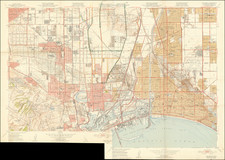
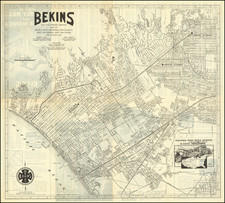
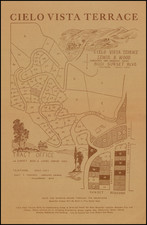
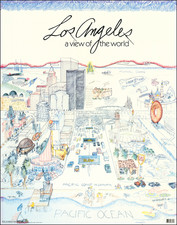
![(Los Angeles Architecture) [Photograph of a 1920s Spanish Colonial Revival home, likely in the Hollywood Hills area; with glass plate negative]](https://storage.googleapis.com/raremaps/img/small/96755.jpg)
